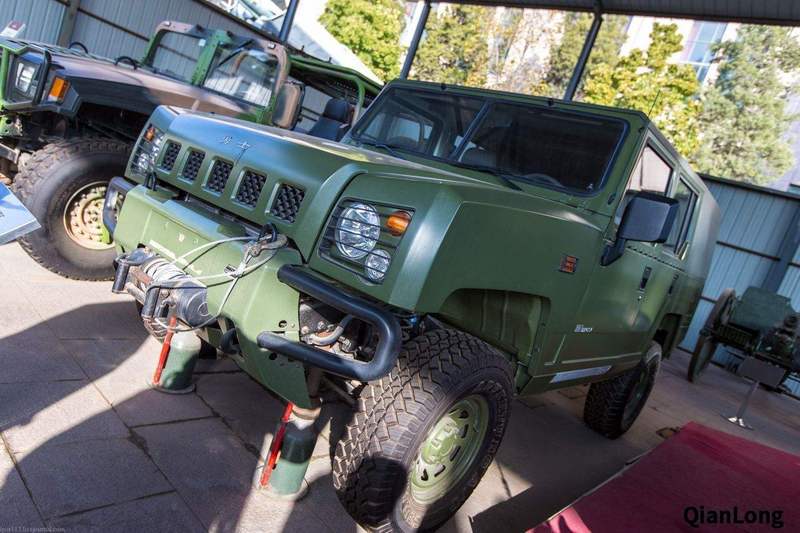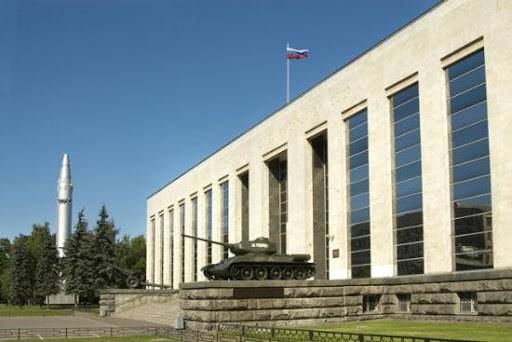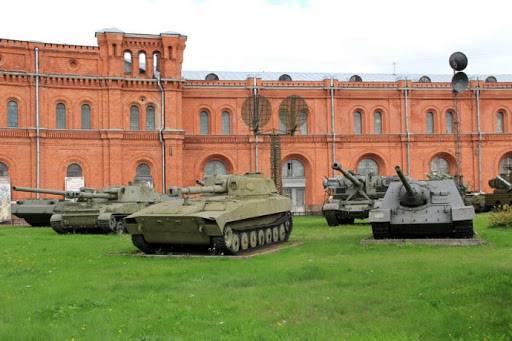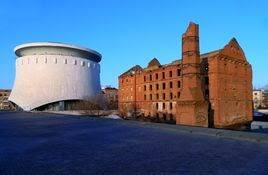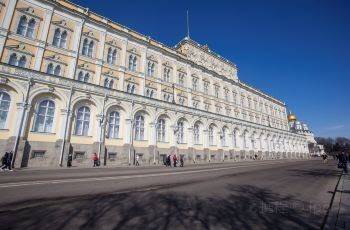Central Armed Forces Museum of Russia
Located at 2 Soviet Army Street, Moscow, the Central Armed Forces Museum of Russia is a large military museum dedicated to military history. Established in 1919 and affiliated with the Ministry of Defense, it is one of the most comprehensive places in the world to witness the 70-year history of the Soviet Red Army. The museum houses nearly 800,000 military exhibits, including military flags, medals and decorations, weapons and military transport vehicles, military uniforms, and equipment from various periods.
St. Petersburg Artillery Museum
The official name of the St. Petersburg Artillery Museum is 'Military Historical Museum of Artillery, Engineers, and Signal Corps.' Its predecessor was part of the arsenal on the Crownwork Island of the Peter and Paul Fortress defense network. This building, which dates back to the same period as the Peter and Paul Fortress, was once the fortress's armory and supply depot. After World War II, it was converted into a military museum.
Central Naval Museum of Russia
The Central Naval Museum is located at 5 Ocean Street, St. Petersburg, Russia. It was founded in 1805 based on Peter the Great's model collection. In 1941, it was moved to the old stock exchange building to display historical materials from the Russian Navy starting from the Soviet era. The central hall not only has accurately scaled models but also many real objects. The most attractive exhibit is a 3000-year-old dugout canoe. There is also Peter the Great's favorite small boat, a small submarine manufactured in 1881, and more. Additionally, the museum displays content related to the Russo-Japanese War.
Vladivostok Fortress Military Historical Defense Museum (Vladivostok Fortress Museum)
The Vladivostok Fortress Military Historical Defense Museum was originally a naval military fortress base, now open as a museum for public visits. There are cannons outdoors, and inside there are six exhibition halls displaying a large number of firearms. The most special feature is that since the time of Peter the Great, all Russian naval military fortresses have had the tradition of firing a noon cannon, and the Amur Bay Fortress fires a cannon every day at noon.
Irkutsk Aircraft Plant
The Irkutsk Aircraft Plant is one of Russia's important military factories and one of the most advanced and promising companies in Russia. The famous Su-27 fighter jet is produced here. Since the establishment of the Irkutsk plant, more than 7,000 fighter jets of over 20 models have been produced here and exported to 37 countries around the world. The Yak-130 trainer aircraft, which is used in conjunction with Sukhoi fighters, is also produced here.
Yekaterinburg Military Museum
A netizen commented on the Yekaterinburg Military Museum: 'Only when you approach this museum will you realize the power of the military weapons displayed in this military museum. Children, young people, and people of all ages are particularly eager to know what kind of military technology we have now and where these technologies are. Yes, even the officers in the concert hall of this building are excellent and have noble souls.' Another netizen commented: 'This historical building was built in the 60s-70s. The building and the concert hall are well preserved. I like everything in the military museum concert hall. The cafeteria in the museum is also very affordable. Recommended!'
The Central Museum of the Great Patriotic War in Russia is located at the foot of Poklonnaya Hill in Moscow. It consists of the Hall of Glory, the Hall of Remembrance, the Hall of the Guards, and galleries. It was built to commemorate the victory in the Great Patriotic War. On November 9, 2008, a friendly delegation from Nanjing, led by Luo Zhijun, a member of the Standing Committee of the Jiangsu Provincial Committee and Secretary of the Nanjing Municipal Committee, visited Moscow and signed a letter of intent to establish a friendship museum between the Memorial Hall of the Victims in Nanjing Massacre by Japanese Invaders and the Central Museum of the Great Patriotic War in Russia.
Battle of Stalingrad Museum
The Panorama Museum of the Battle of Stalingrad is located in Volgograd, Russia, situated on Soviet Street along the banks of the Volga River. The museum features four panoramic paintings, eight exhibition halls, and a gallery of portraits of Soviet military leaders, displaying over 3,500 exhibits. The museum houses war relics from the October Revolution of 1917, including numerous photos and artifacts from the Battle of Stalingrad. Exhibits such as a model of Stalingrad, which was burned to ruins by the war in 1942, weapons used at the time, and various military supplies silently narrate this history. The museum's roof, adorned with a mosaic of the party flag and Lenin's image, is a symbol of Volgograd's bloody history. The soldiers defended this city with their blood, safeguarding Russia's territorial integrity and national independence.
Khabarovsk Military Museum
The Khabarovsk Military Museum is located in the center of Khabarovsk. The exterior of the Khabarovsk Military Museum is relatively simple, being a two-story red brick building. Inside, it houses many firearms and portraits of soldiers.
Moscow Armory Museum
The Moscow Armory Museum is located on the beautiful Red Square. It was officially established in 1808 and is one of the oldest museums in Moscow. Initially, in 1508, it was the royal arsenal, a storage place for weapons, ornaments, and items purchased by the tsar. It was also the workplace for Moscow's best gunsmiths, jewelers, and painters. From the late 17th century to the early 18th century, the workshops of the Kremlin were suppressed, and by order of Peter the Great, the best craftsmen were gradually transferred to the new capital, St. Petersburg. In 1727, these art repositories and workshops were merged into the 'Workshops and Armory'. In 1806, Alexander I ordered the workshops and armory to be opened to the public. The museum building was constructed in 1812 according to the design plan of Yegotov. Today, people can visit this extraordinary armory museum in the Kremlin.
